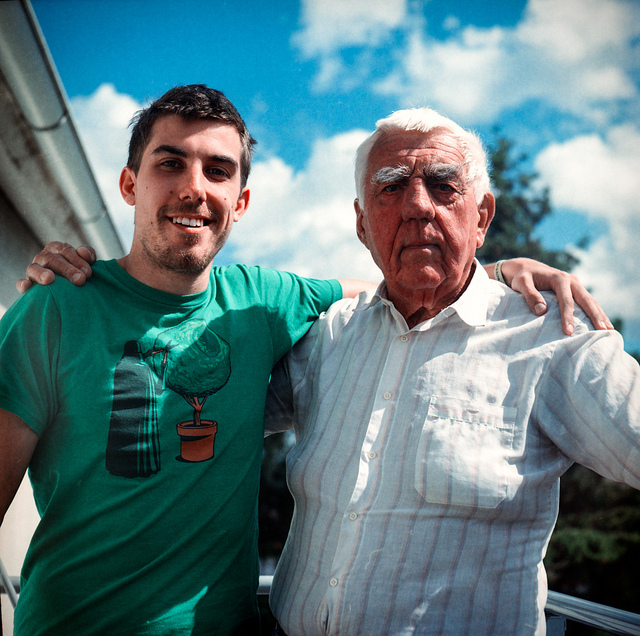34
Learning Objectives
- Define social gerontology.
- Distinguish biological aging, psychological aging, and social aging.

Because we all want to live into old age, the study of age and aging helps us understand something about ourselves and a stage in the life course we all hope to reach.
Carl Nenzén Lovén – Grandpa – CC BY 2.0.
Here is why you should want to know about aging and the problems older people face: You will be old someday. At least you will be old if you do not die prematurely from an accident, cancer, a heart attack, some other medical problem, murder, or suicide. Although we do not often think about aging when we are in our late teens and early twenties, one of our major goals in life is to become old. By studying age and aging and becoming familiar with some of the problems facing the elderly now and in the future, we are really studying something about ourselves and a stage in the life course we all hope to reach.
The study of aging is so important and popular that it has its own name, gerontology. Social gerontology is the study of the social aspects of aging (Novak, 2012). The scholars who study aging are called gerontologists. The people they study go by several names, most commonly “older people,” “elders,” and “the elderly.” The latter term is usually reserved for those 65 or older, while “older people” and “elders” often include people in their fifties as well as those 60 or older.
Dimensions of Aging
Age and aging have four dimensions. The dimension most of us think of is chronological age, defined as the number of years since someone was born. A second dimension is biological aging, which refers to the physical changes that “slow us down” as we get into our middle and older years. For example, our arteries might clog up, or problems with our lungs might make it more difficult for us to breathe. A third dimension, psychological aging, refers to the psychological changes, including those involving mental functioning and personality, that occur as we age. Gerontologists emphasize that chronological age is not always the same thing as biological or psychological age. Some people who are 65, for example, can look and act much younger than some who are 50.
The fourth dimension of aging is social. Social aging refers to changes in a person’s roles and relationships, both within their networks of relatives and friends and in formal organizations such as the workplace and houses of worship. Although social aging can differ from one individual to another, it is also profoundly influenced by the perception of aging that is part of a society’s culture. If a society views aging positively, the social aging experienced by individuals in that society will be more positive and enjoyable than in a society that views aging negatively. As we shall see, though, the perception of aging in the United States is not very positive, with important consequences for our older citizens.
Key Takeaways
- The study of the elderly and aging helps us understand problems in a state of the life course we all hope to reach.
- Biological aging refers to the physical changes that accompany the aging process, while psychological aging refers to the psychological changes that occur.
- Social aging refers to the changes in a person’s roles and relationships as the person ages.
For Your Review
- Think about an older person whom you know. To what extent has this person experienced psychological aging? To what extent has this person experienced social aging?
- The text states that the perception of aging in the United States is not very positive. What do you think accounts for this?
References
Novak, M. (2012). Issues in aging (3rd ed.). Upper Saddle River, NJ: Pearson.
